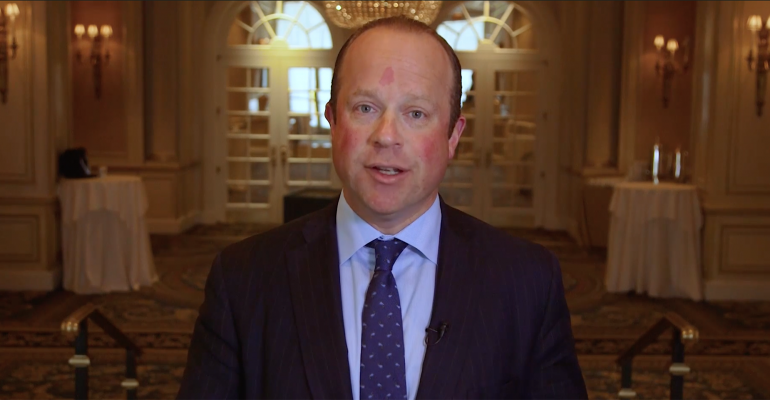It generally pays to listen to your customers.
That’s certainly the case for renowned money management firm Davis Advisors, which had $26 billion under management as of Nov. 30.
Its customers—mainly financial advisors—started asking a few years ago if it could create exchange traded funds to replicate the active management strategies of its mutual funds. Davis started introducing actively managed ETFs in 2017 and now has four, with a combined total of $587 million in assets as of Nov. 30.
One fund is made up of U.S. large-cap stocks Davis Select U.S. Equity (DUSA), made up of overseas stocks Davis Select International (DINT), one is made up of stocks from around the world Davis Select Worldwide (DWLD) and one is made up of financial stocks Davis Select Financial (DFNL).
Davis was early and enthusiastic about putting their active strategies in an ETF wrapper at a time when other active managers were reluctant. Most active managers worry about the real-time portfolio transparency of an ETF revealing the “secret sauce” of their trading strategies, thus crowding out their edge. On the flip side, investors looking for active managers aren’t used to finding them in the ETF market. But those conditions are changing as more active managers are turning to the funds.
Wealth Management.com recently spoke to Dodd Kittsley, director of Davis’ ETF business, to get his insights about actively managed ETFs. Not surprisingly, he thinks investors are making a mistake to foreswear all active management in favor of passive funds. But it’s difficult to convince some investors that ETF investing can include active management too, he says.
Wealth Management: What inspired you to create actively managed ETFs?
Dodd Kittsley: Our existing clients asked for it—a lot of advisors. They were converting their businesses [to ETFs] or had clients asking for ETFs. So we looked at the trade offs.
WM: What are the trade-offs?
DK: The strategies are the same with both our mutual funds and ETFs. With mutual funds, you have the opportunity to invest in private placements or less liquid securities. You don’t include that in an ETF, because you lose the advantage of tighter spreads that liquid stocks create. But that does limit your alpha opportunities. Meanwhile, ETFs make less capital gains distributions. Our clients who use both mutual funds and ETFs are often attracted to mutual funds for retirement accounts and ETFs for non-retirement accounts. One of the biggest challenges with the ETFs is telling folks not just about an index, but about delivering active exposure in a more efficient way.
WM: Given that passive funds have outperformed active in recent years, how do you combat investor skepticism?
DK: All five of Davis’ strategies are time-tested. They have outperformed their benchmarks and peers since inception. There can be periods of underperformance, but we are very confident in our long-term record.
I think people are missing a few points on active versus passive. Active management has gone through cyclical patterns in terms of its performance versus the benchmark. There have been years of active managers outperforming. Passive has done better than active during the bull market of the last decade.
My fear is that the conventional wisdom has shifted to the view that active can never outperform passive. I think there’s tremendous value to having an active in a portfolio. In a momentum bull market, passive tends to outperform active, but that’s not the case in modest and negative return periods.
We think there are certain characteristics in managers that put them in position to outperform. You want to find managers with long track records of outperformance, managers with high conviction, benchmark, agnostic portfolios. There’s a lot of closet-indexing going on. That style is doomed to failure, especially with a lot of managers charging exorbitant fees.
It’s also important for managers to have skin in the game and be aligned with investors. Over $2 billion of our $26 billion in assets comes from ourselves.
WM: Do you intend to launch more ETFs?
DK: Never say never. But Davis focuses on five core strategies, and we already have ETFs on four. We aren’t a product-manufacturing-type organization. I wouldn’t expect many more.
WM: What is the growth potential for actively managed ETFs in general?
DK: I think it’s enormous. I view actively managed strategies as the next vehicle for growth in the ETF industry. There may be innovations in structure to open the gateways for more: non- or semi-transparent ETFs. That might open things up for microcap stocks, for example.
But non-transparency isn’t a requirement for us. At Davis, the stars are aligned for us to be fully transparent. We are able to do that because we invest primarily in large-cap liquid securities—a long-term approach with lower turnover. We aren’t concerned with giving away the secret sauce. Investors have a right to know what’s in their funds. The traditional ETF structure works for us—full stop.
I foresee actively managed ETF strategies growing more than the ETF market as a whole. Its growth was more than double the overall market last year; active is still less than 2 percent of all ETF assets.
WM: What are the biggest headwinds facing actively managed ETFs?
DK: Raising awareness that ETFs aren’t just about an index. An actively managed ETF isn’t an oxymoron. It can be effectively applied to deliver active strategy.
Dodd Kittsley is scheduled to speak at the InsideETF's conference, which runs February 10-13, 2019.





